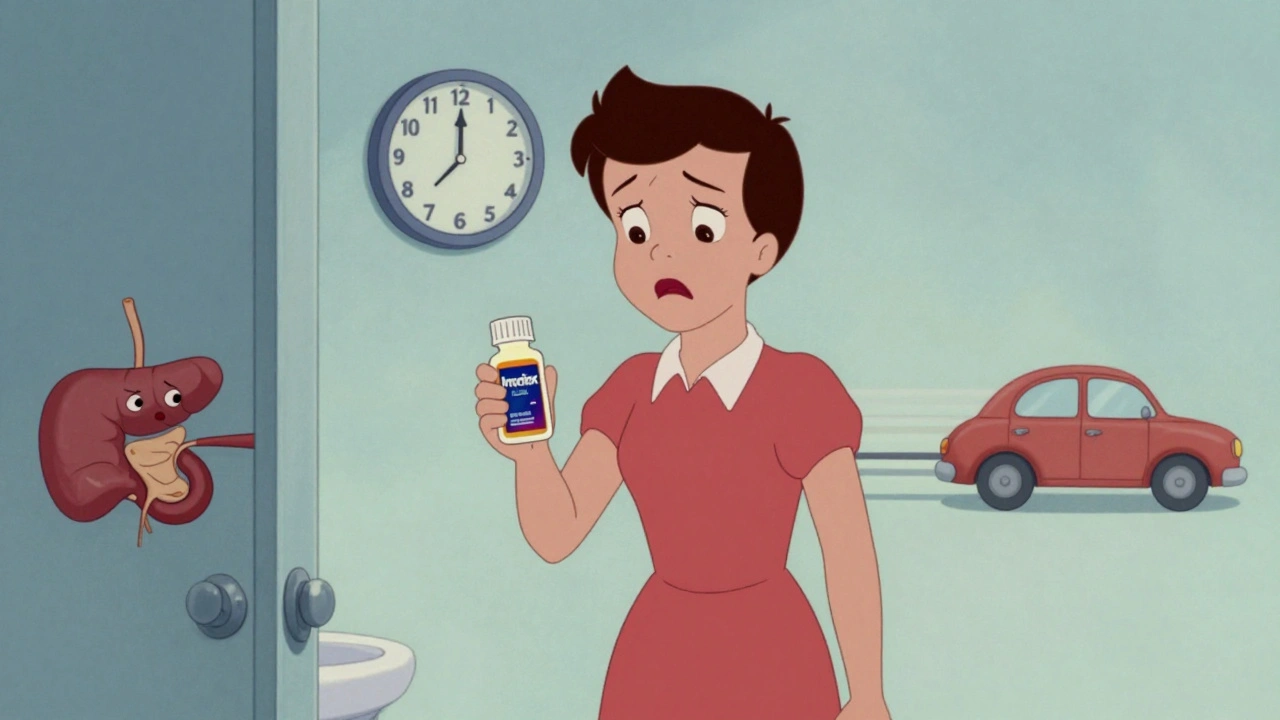Loperamide: What It Does and How to Use It Safely
Loperamide is the most common over-the-counter drug for sudden diarrhea. It works in the gut to slow intestinal movement, which reduces the number of bowel motions and the feeling of urgency. That makes it useful when you need quick symptom relief—but it won’t treat every kind of diarrhea.
How loperamide works and when to take it
Think of loperamide as a short-term fix for watery, non-bloody diarrhea. The usual adult dose is 4 mg at first, then 2 mg after each loose stool. Most OTC advice caps daily use at 8 mg unless a doctor sets a different plan; some prescriptions may allow up to 16 mg under supervision. For children, follow dosing instructions on the package or ask a pharmacist—do not give it to infants under 2 months, and avoid it in young children unless directed by a clinician.
Don’t use loperamide if you have bloody diarrhea, a high fever, severe belly pain, or if you suspect C. difficile. In those cases, slowing the gut can hide a serious infection or make things worse. People having an inflammatory bowel disease flare should also avoid it unless told otherwise by their specialist.
Safety, interactions, and practical tips
High or repeated doses of loperamide can cause dangerous heart rhythm problems and other serious issues. Avoid taking more than recommended and don’t combine it with strong P-glycoprotein or CYP3A4/CYP2C8 inhibitors (some antifungals, certain antibiotics, or HIV meds can raise loperamide levels). Also be careful if you use drugs that prolong the QT interval—ask a provider first.
Always pair loperamide with fluids. Rehydrate with oral rehydration solutions when you lose a lot of fluid or can’t keep drinks down. Eat bland, easy-to-digest foods and skip dairy, alcohol, and heavy or spicy meals until you’re better. Probiotics like Saccharomyces boulardii or certain Lactobacillus strains may help some types of infectious diarrhea—check with a clinician for the right choice.
If you’re pregnant, breastfeeding, elderly, or have liver disease, talk to your clinician before using loperamide. Watch for warning signs: blood in stool, persistent high fever, severe abdominal pain, fainting, very low urine output, or a fast/irregular heartbeat after taking the drug. See medical care if diarrhea lasts more than 48 hours despite treatment.
Quick checklist: start with the lowest effective dose, use rehydration fluids, avoid use with bloody/high-fever diarrhea, review other medications for interactions, and contact a healthcare provider for prolonged or severe symptoms. Loperamide can be a helpful tool when used correctly—just know its limits and risks.
OTC Diarrhea Treatments: When to Use and When to See a Doctor

Learn when to use OTC diarrhea treatments like Imodium and Pepto-Bismol - and when to skip them and see a doctor. Avoid dangerous mistakes and know the real signs you need medical help.
- December 11 2025
- Tony Newman
- 15 Comments
The History of Loperamide: From Discovery to Modern Use

Well, buckle up, folks! Today we're diving head-first into the wild, roller-coaster ride that is the history of Loperamide - yeah, that humble little molecule that's been saving our butts (literally) since the 1970s! This unsung hero was discovered by a pharmaceutical company called Janssen Pharmaceutica, and boy, did they hit the jackpot! Fast forward a few decades, and this little gem is now a staple in medicine cabinets worldwide, always ready for those "uh-oh" digestion moments. Isn't it amazing how something so small can make such a big difference? So, here's to Loperamide, the superhero of the digestive system!
- July 31 2023
- Tony Newman
- 20 Comments
